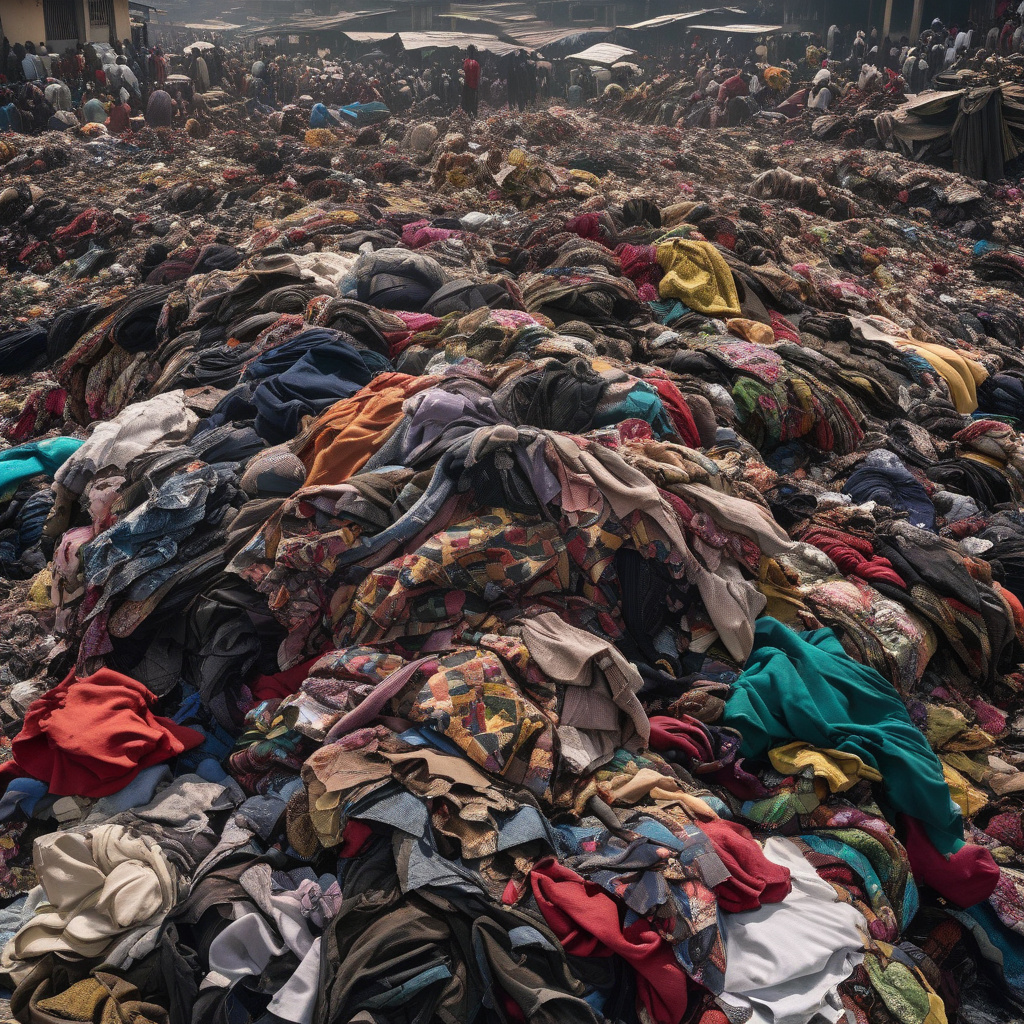Used Clothes Pile Up as Ghana’s Kantamanto Market Struggles to Rebuild After Fire
In the heart of Ghana’s capital, Accra, lies Kantamanto Market, a bustling hub known for its vibrant secondhand clothing trade. However, the market faced a devastating blow on January 1st when a ferocious blaze engulfed its premises, leaving behind a trail of destruction. This catastrophic fire not only ravaged the physical infrastructure of the market but also dealt a severe blow to the livelihoods of countless traders who relied on the bustling trade of used clothes.
Kantamanto Market has long been a pivotal player in the global secondhand clothing industry, serving as a key destination where discarded garments from Western countries find a new lease on life. The market has drawn attention for its ability to breathe new life into pre-loved clothes, offering affordable and fashionable options to local consumers while also contributing to sustainable fashion practices by promoting the reuse of garments.
The aftermath of the fire has left a gaping hole in the operations of Kantamanto Market, with piles of used clothes accumulating as traders grapple with the daunting task of rebuilding their businesses from the ashes. The resilience of the market’s community is being put to the test as they navigate the challenges of reconstruction, seeking to revive a once-thriving hub of commerce and culture.
The impact of the fire extends beyond the borders of Ghana, reverberating throughout the global secondhand clothing supply chain. Kantamanto Market served as a crucial link in the chain, connecting sellers of used clothes with buyers from far and wide. The disruption caused by the fire has led to a slowdown in the flow of secondhand garments, affecting not only local traders but also reverberating across the international market.
Efforts to rebuild Kantamanto Market are underway, with stakeholders rallying to support the affected traders in their journey towards recovery. The resilience and determination of the market’s community are evident as they work tirelessly to restore what was lost and revive the vibrancy of this essential trading hub. However, the road to recovery is fraught with challenges, from securing funding for reconstruction to navigating the complexities of rebuilding a market deeply intertwined with the fabric of Ghana’s cultural and economic landscape.
As Kantamanto Market strives to rise from the ashes, the global community watches with bated breath, recognizing the significance of this resilient hub in the broader context of sustainable fashion and circular economy practices. The challenges faced by Kantamanto Market underscore the interconnected nature of the fashion industry and the importance of supporting local economies that drive initiatives towards a more sustainable and inclusive future.
The story of Kantamanto Market serves as a powerful reminder of the fragility of our interconnected global supply chains and the resilience of communities in the face of adversity. As Ghana’s iconic secondhand clothing hub rebuilds and reimagines its future, the world waits in anticipation, hopeful for a resurgence of trade, culture, and sustainability in the heart of Accra.
Kantamanto Market, once a thriving symbol of secondhand commerce, now stands as a testament to the resilience and determination of its community as they strive to overcome the challenges brought forth by the devastating fire.
Ghana, Kantamanto Market, Secondhand Clothing, Sustainable Fashion, Circular Economy











